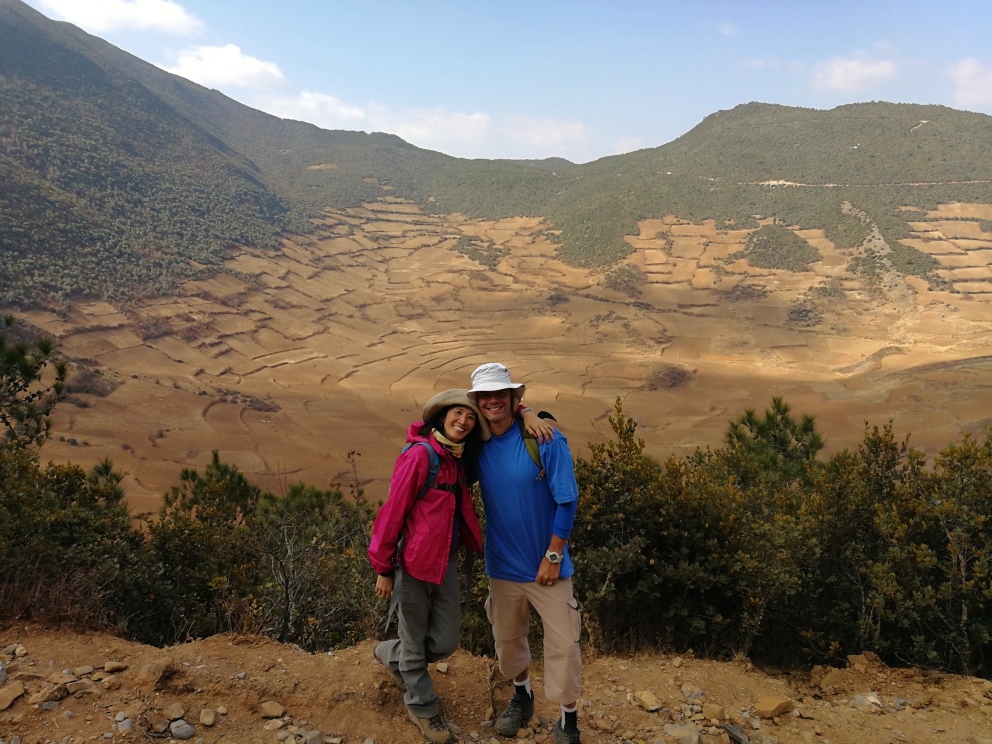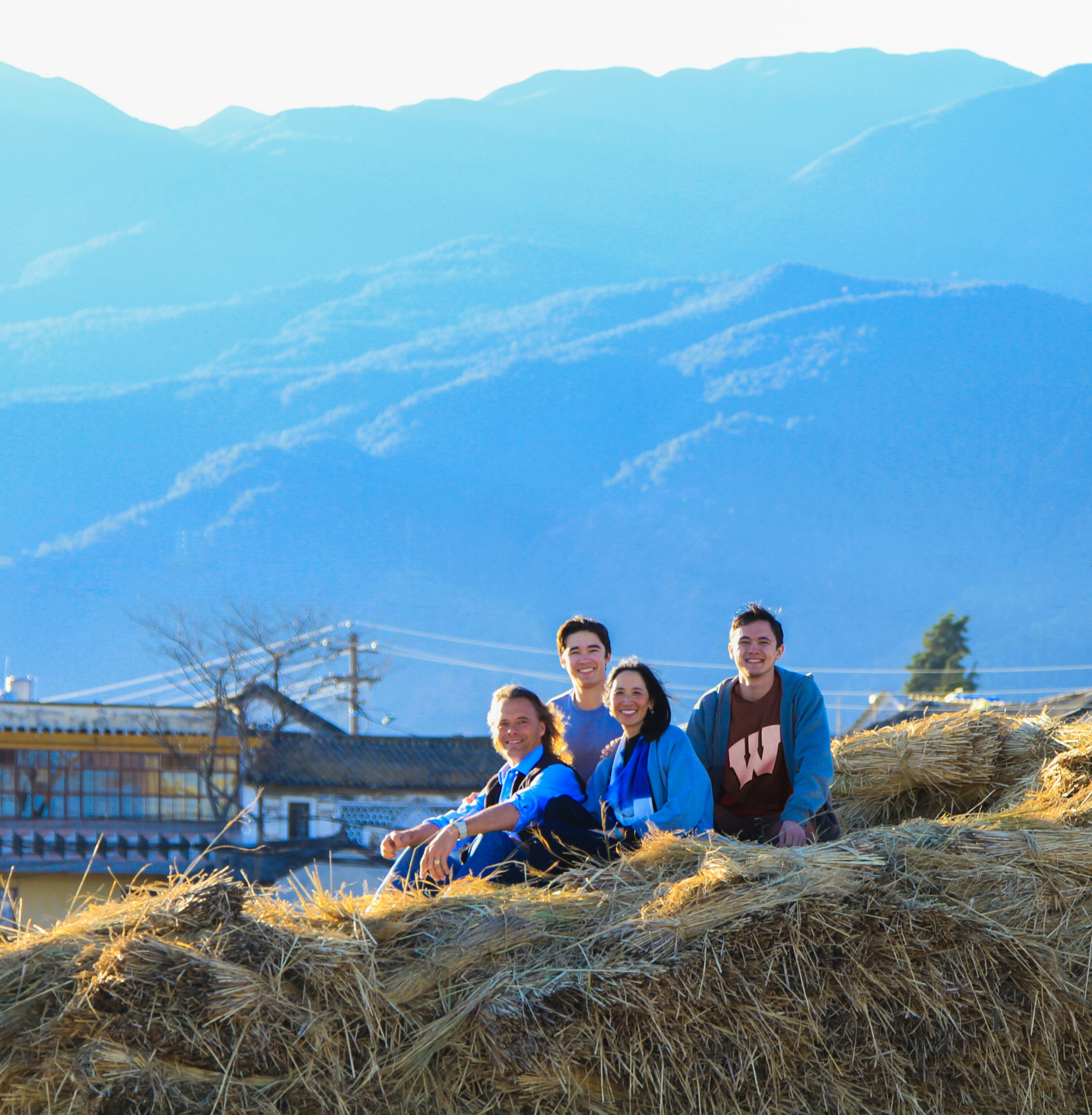Below you can find the incredible story behind an incredible hotel. Asia Art Tours (along with the New York Times and the Atlantic!) have been fortunate enough to speak with the award-winning husband and wife team behind one of China’s best hotels: The Linden Center
Located in Yunnan, the province containing China’s most diverse scenery and cultures, the Yunnan Center is built out of the former home of a wealthy merchant, offering architecture that has long since disappeared in the rest of China. Brian and Jeanee work tirelessly collaborating with locals, hosting foreign artists and working to preserve China’s architectural heritage at the Linden Center and throughout China.
After reading the interview, email Matt@asiaarttours.com, to begin planning your Yunnan Holiday.

1. AAT: Let’s start at the beginning! How did you and Brian meet, and from there how did you end up in Dali (Xizhou) running the Linden Center? I know you both have incredible personal journeys so feel free to share as much as you’d like!
Jeanee and I met in 1987 at Nanjing University. I was attending a graduate program at the Johns Hopkins-Nanjing Center and Jeanee was studying Mandarin via her home university- Whitworth College. At the time, I had already spent two years in Beijing as an actor in 1984 (one of the first post-1949 foreign leading roles) and a photo journalist with CBS News. I had also completed an intensive Masters program in Asian Economics at the University of Illinois. After meeting Jeanee, I included Stanford University in my Ph.D. target schools and was honored to receive a scholarship from them to continue my studies in Jeanee’s hometown of San Francisco. We have been together ever since and always thank China for bringing us together.
2. AAT: The Linden Center is no ordinary hotel! Could you tell us a bit about the history of the property and of Xizhou? How does it connect to the traditional arts of China and Yunnan?
Jeanee and I wanted to create a rural-based intellectual and cultural retreat in China; a place where people could immerse themselves in China’s august traditions while being informed and serviced by a team of scholars and locals. Additionally, we wanted to develop said project in a historic compound that was still a vital social and cultural resource of the surrounding village. Even after spending two decades of time in China off-and-on, we still spent two years (2005-2006) looking for the ideal location and structure. At the time, our two boys were 7 and 10, and we traveled throughout China, homeschooling them in little hostels, before settling on Xizhou and our nationally protected site, Yang Pinxiang. This was clearly a labor of love, and we were discouraged to pursue the project by most China-hands. There were no (and still are not any) examples of a foreign couple taking over a nationally protected heritage site. Our building, although it is only 70+ years old, is a dignified example of pre-revolutionary architecture and is protected at the same level as the Great Wall and Forbidden City. Taking over such an important building was daunting. The goal was and still is to allow China’s beauty, both tangible and intangible, to seduce a visitor. We felt that China’s tourism model has relied too much on non-indigenous designs and imported luxury. China’s social and cultural resources deserve better. They represent some of the most enlightened examples of mankind’s wisdom and creativity. Too often in China, they are being destroyed to cater to a nouveau rich trend chased by wealthy coastal residents.

3.AAT: You were pioneers in saving these properties, but why was no one saving these properties before? Now that other entrepreneurs (local and foreign) have seen your success is there a preservation movement growing in China?
Preservation projects in China cost more to do, face more bureaucratic challenges, and can never replicate the aforementioned luxury needs of many of China’s wealthy travelers. Said travelers are more excited by the size of a bathtub (and, of course, how many rose petals float in the tub and on the bedspread) or the choices of French wine than they are about experiencing cultural differences. Thus, the business model for similar projects seldom entices Chinese investors. Our goals naively went beyond monetary gain. We wanted to do something that China could be proud of, something that could influence foreign visitors’ impressions and understanding of this great country. I have yet to see the same passion in other private entrepreneurs pursuing preservation projects. More common is someone who made money in the big cities and decides to restore an old structure as a vanity project. Such projects always lack the soul and seldom replicate the sense-of-place that originally animated the structures. Those investors use their money to talk, to interact with the community, and not their spirit. Their projects are usually nothing more than empty and soulless monuments to themselves and not revitalized resources of and for the surrounding village.
4. AAT: Yunnan is one of the most culturally diverse provinces in all of China. How have you tried to promote some of the local cultures at your properties? And how has Yunnan culture inspired you personally?
While we are always proud of our Bai friends and neighbors, the inspiration for the Centre, however, went beyond ethnic culture. We chose Xizhou because it had the largest intact structures that we could find west of Fujian’s tulou. We immerse ourselves in the lives of Xizhou, but do so as equals. We respect their culture as if it were our own, and we focus on it to highlight the beauty of all of China. Our guests and team inteact seamlessly with our community. It is the friendliness and inclusiveness of our neighbors that continues to inspire me and my team.

5. AAT : We’re really excited about the opening of the Linden Commons. What was the inspiration of the idea? Why did you feel it was important to have a ‘public’ gathering space to celebrate local art and culture?
We are always willing to protect existing heritage sites that do not appear to be given the proper care and respect. The Linden Commons, which is located in the nationallly protected Bao Chengfu compound, was one such building. Because of its size- its acre of building is double the size of our first Centre- the Commons required a commitment that had to go beyond monetary gain. It required passion and patience, two characteristics that are not very common in China’s business world. Rather than convert it into another traditional hotel, we decided to use the space to encourage more interaction between the village and our guests. The gardens, conference rooms, restaurants, cooking school and cafe all have been designed to host activities that can be attended by both our guests and our neighbors. Too often, hotels wall themselves off from the surrounding communities, giving back little to their neighbors beyond a cleaning job or two. We want our guests to share their skills and passions with the locals, and the Commons was established to build a platform for such exchange.
6. AAT: Lastly, I wanted to ask your thoughts on the past and the future. In the Modern world, why is it important to preserve and promote the traditional, the folk and the cultural? How do you teach people to appreciate both technology and tradition? (The Smartphone and the wisdom/traditions of their ancestors?)
My approach to your question is non-traditional, a bit naive but very personal. Having come from a working class, Chicago background, my options in life were very limited. The story of how I came to China is one of the most unique I have come across, and I continue to honor China as a mentor/teacher that gave me that one big chance in life to transform myself. I have since traveled to over 100 countries and have revelled in the world’s diverse cultures. However, I always seem to come back to China and its long history. There is something that resonates with me, and I believe it is this intangible spirit that must be protected and passed on. It is the root of China- an essence that is commonly felt but hard to describe. I feel it, but most visitors never perceive it as they jump from Starbucks to City Shoppe to their walled-in villa compounds. It is now buried beneath the cement and neon facades that now blanket most of this country. The world must embrace China, if for no other reason than its financial and military strength. But China must soften those aspects of its international interaction with more effective soft power. That should come from its culture, from its own creativity. My foreign friends ask me why I should protect China’s culture when most Chinese could not care less about it. This is a good question. The answer, however, is not so complicated: sometimes we need a distance from our own surroundings to fully understand their importance and weaknesses. I feel like I know more about America by being able to view it now from afar. I too believe that I can sometimes better grasp the importance of China’s by being an outsider. I would like to remind them to take better care of their own traditions, and my wife and I have tried to create a social entrepreneurial model that is self sufficient financially but sustainable culturally and socially. China does not need more businessmen, it needs more dreamers, idealists and cultural protectors. This will help China’s soft power become much more real and effective and allow the world to embrace this nation with less fear and unease.

For Planning your trip to Yunnan China, please reach out to us at Matt@Asiaartours.com
For more information on Brian, Jeanee and their amazing project please reach head to: www.linden-centre.com

